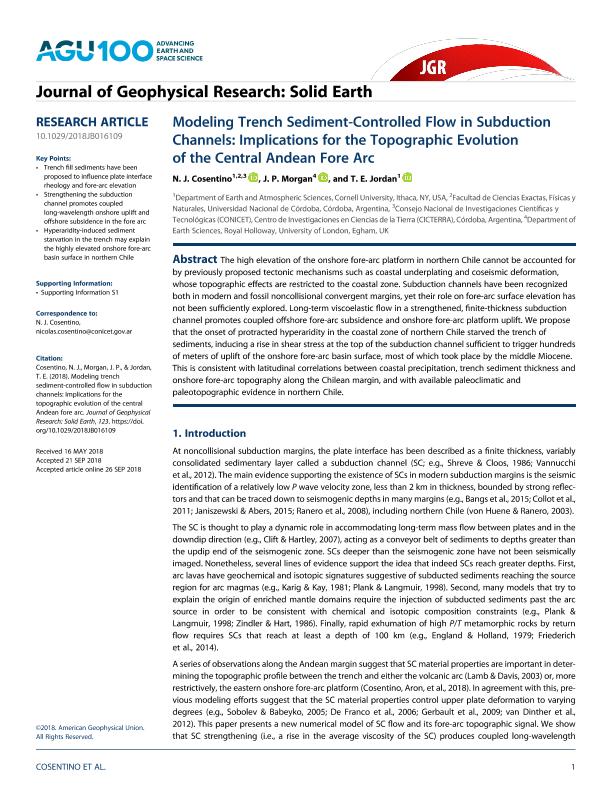Artículo
Modeling trench sediment-controlled flow in subduction channels: Implications for the topographic evolution of the Central Andean Fore Arc
Fecha de publicación:
10/2018
Editorial:
Blackwell Publishing Ltd
Revista:
Journal of Geophysical Research: Solid Earth
ISSN:
2169-9313
e-ISSN:
2169-9356
Idioma:
Inglés
Tipo de recurso:
Artículo publicado
Clasificación temática:
Resumen
The high elevation of the onshore fore-arc platform in northern Chile cannot be accounted for by previously proposed tectonic mechanisms such as coastal underplating and coseismic deformation, whose topographic effects are restricted to the coastal zone. Subduction channels have been recognized both in modern and fossil noncollisional convergent margins, yet their role on fore-arc surface elevation has not been sufficiently explored. Long-term viscoelastic flow in a strengthened, finite-thickness subduction channel promotes coupled offshore fore-arc subsidence and onshore fore-arc platform uplift. We propose that the onset of protracted hyperaridity in the coastal zone of northern Chile starved the trench of sediments, inducing a rise in shear stress at the top of the subduction channel sufficient to trigger hundreds of meters of uplift of the onshore fore-arc basin surface, most of which took place by the middle Miocene. This is consistent with latitudinal correlations between coastal precipitation, trench sediment thickness and onshore fore-arc topography along the Chilean margin, and with available paleoclimatic and paleotopographic evidence in northern Chile.
Palabras clave:
ELEVATION
,
FINITE ELEMENT METHOD
,
FORE ARC
,
NORTHERN CHILE
,
SUBDUCTION CHANNEL
Archivos asociados
Licencia
Identificadores
Colecciones
Articulos(CICTERRA)
Articulos de CENTRO DE INVEST.EN CS.DE LA TIERRA
Articulos de CENTRO DE INVEST.EN CS.DE LA TIERRA
Citación
Cosentino, Nicolas Juan; Morgan, J. P.; Jordan, T. E.; Modeling trench sediment-controlled flow in subduction channels: Implications for the topographic evolution of the Central Andean Fore Arc; Blackwell Publishing Ltd; Journal of Geophysical Research: Solid Earth; 123; 10; 10-2018; 9121-9135
Compartir
Altmétricas




